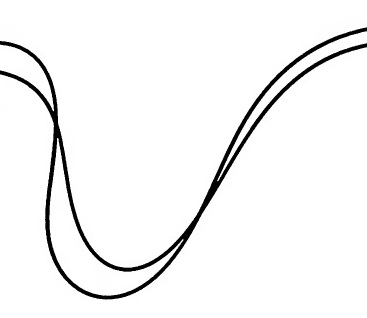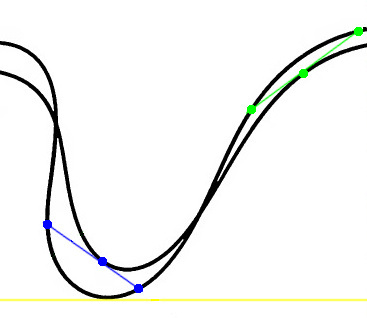
You come upon the track of a bicycle in the mud. Was the bicycle traveling to the left or the right?
| SelectClick for Answer | |
|---|---|
On a conventional bicycle the rear wheel is fixed — at any given moment it’s traveling toward the front wheel’s point of contact with the ground. This means that a tangent drawn to the rear wheel’s track will always intersect the front wheel’s track. The reverse is not necessarily true — in the diagram above, the yellow tangent drawn to one curve doesn’t intersect the other curve at all. So the curve with the yellow tangent must correspond to the front wheel. Now, which way was the bicycle going? Choose some points on the rear wheel’s curve and draw tangents at those points, extending them in both directions until they reach the front wheel’s curve. This corresponds to putting the actual bicycle on the diagram, with its rear wheel at the tangent point, and assessing the position the front wheel would take in either direction, left and right. The distance between the wheels is constant, so we want to choose the direction in which the length of the segments is unchanging. Above, the leftward segments of the blue and green tangents are the same length, but the rightward segments are different, so the bicycle must have been traveling from right to left.
| |

